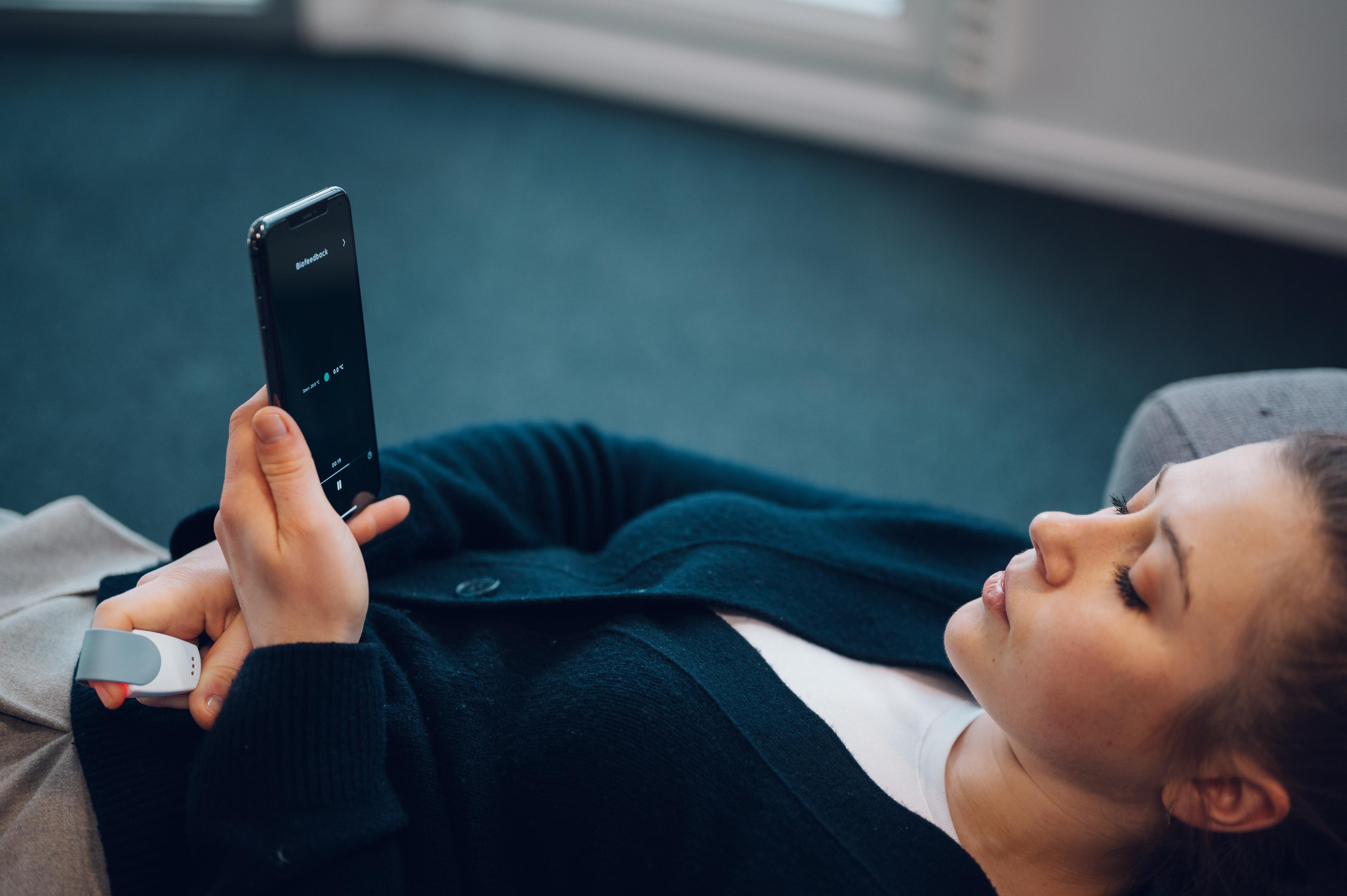
Biofeedback to prevent migraine
Biofeedback offers a path to understanding and controlling the body's responses, potentially easing migraine symptoms.
Direct Feedback
Biofeedback is a learning process where you become familiar with your body's response patterns and practice controlling them in the right direction. Using portable sensors that measure signals from your body, you receive direct feedback on your body's activity (bio) on your mobile phone.
During biofeedback, you can monitor pulse variability, fingertip temperature, and muscle tension. You can see how your body responds to exercises like muscle relaxation and controlled breathing. Over time, new bodily response patterns will become automated in daily life, reducing susceptibility to migraine attacks. Regular biofeedback is often important for maintaining effectiveness.
Home-based Biofeedback
Traditional biofeedback takes place in a clinic with a therapist but is currently not widely available in Norway. We develop a home-based biofeedback treatment called Cerebri. The treatment is currently undergoing a clinical trial at St. Olavs Hospital, Ahus, UNN and HAU.
In Cerebri, we measure and give feedback on:
Heart rate variability (HRV)
HRV is the variation in time between each heartbeat, indicating the activity of your autonomic (involuntary) nervous system.
Finger temperature
Your fingertip temperature can indicate something about the stress response in your autonomic nervous system. The stress response in the nervous system causes blood to be prioritized to vital organs such as the brain, heart, and muscles. When you reduce the stress response of the nervous system, the skin in your fingers receives more blood, and the temperature increases.
Muscle tension
Muscle tension and muscle knots can occur when one or more muscles fail to relax and remain contracted over time. When muscles stay contracted, it can lead to poorer blood circulation, which in turn can cause headaches.
